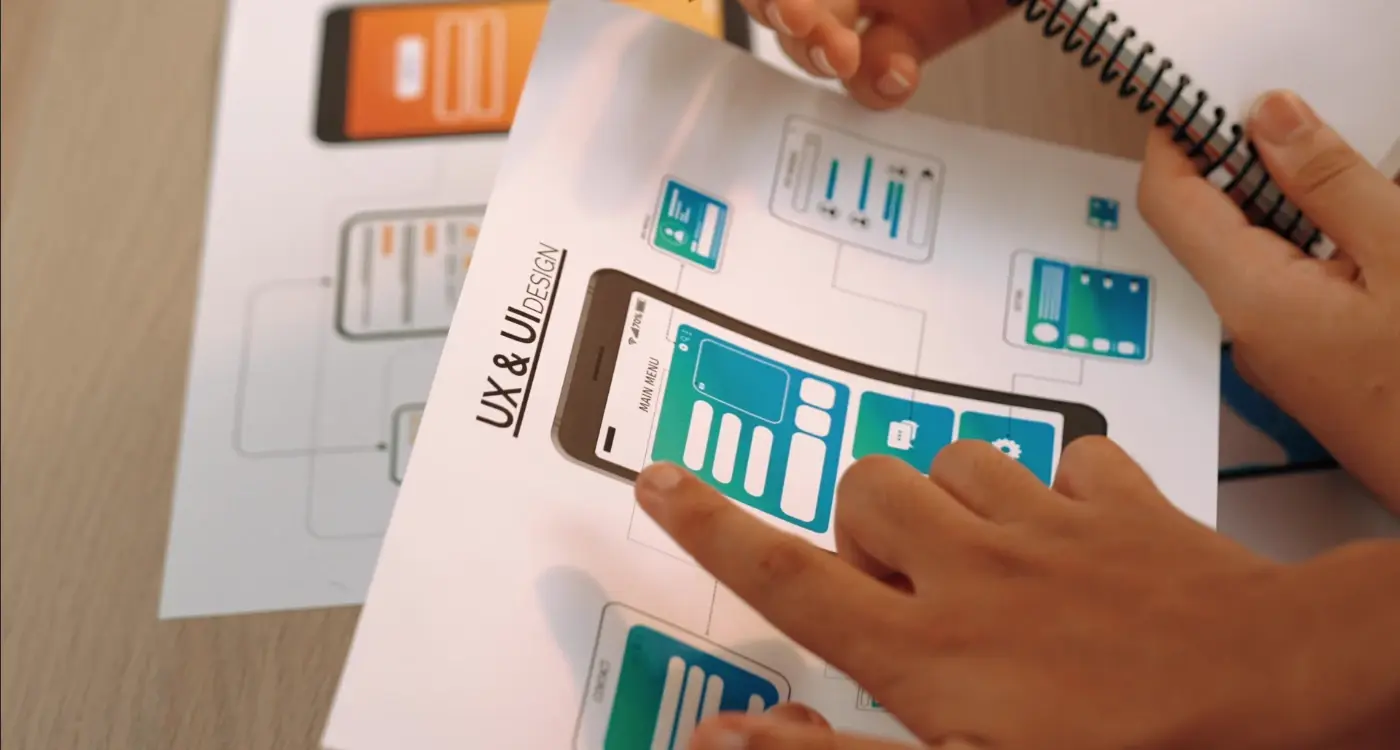How Do You Test if Game Features Actually Help Your Business?
Ever wondered if those shiny badges and progress bars you've added to your business app are actually making you money? I mean, everyone's talking about gamification these days—adding points systems, leaderboards, achievement unlocks—but here's what keeps me up: most business owners have no clue whether these features are helping or just making their app more complicated.
After building apps for companies ranging from scrappy startups to massive corporations, I've seen the same pattern over and over. Teams get excited about adding game-like features because they sound modern and engaging. But then what? They launch these features into the wild and... well, they hope for the best. That's not a strategy; that's expensive guesswork.
The truth is, testing gamification isn't like testing a new button colour or headline. Game features affect user behaviour in complex ways that unfold over weeks or months, not minutes. You might see engagement spike initially—users love new shiny things—but does that translate to actual business value? Are people completing more tasks? Staying subscribed longer? Spending more money?
The most successful apps aren't just engaging—they're engaging in ways that directly support business objectives
Here's the thing: you can absolutely measure whether your game features are working. You just need to know what to measure, when to measure it, and how to interpret the results. Because at the end of the day, if your gamification isn't moving the needle on metrics that matter to your bottom line, you're essentially paying for expensive entertainment that your users will get bored of anyway.
Why Game Features Matter for Business Apps
Right, let's get straight to the point—adding game features to your business app isn't just about making it "fun." I've watched countless apps struggle with user retention because they forgot one basic truth: people use apps out of habit, not obligation. Sure, your expense tracking app does what it says on the tin, but does it give users a reason to come back tomorrow?
Game mechanics work because they tap into basic human psychology. Progress bars make completing tasks feel rewarding; leaderboards create friendly competition; achievement badges give users something to show for their efforts. But here's where most businesses get it wrong—they slap on a few points and badges without understanding what actually drives their users.
The Real Business Benefits
When done properly, game features solve real business problems. Higher user engagement means better retention rates, which directly impacts your customer lifetime value. I've seen fitness apps increase daily usage by 40% just by adding streak counters. Banking apps boost feature adoption through progress tracking. The key is matching game mechanics to user motivations.
Think about it this way: every time someone opens your app, they're making a choice. They could be checking social media, reading news, or doing something else entirely. Game features help tip that decision in your favour by making the experience more rewarding.
But—and this is important—you need to test whether these features actually work for your specific audience. What motivates a project manager might be completely different from what drives a fitness enthusiast. That's why measurement matters so much. Without proper testing, you're just guessing about what makes your users tick.
Setting Up Your Measurement Framework
Right, let's talk about something most app developers get completely wrong—setting up proper measurement before you launch your game features. I mean, you wouldn't build a house without blueprints, so why would you add points, badges, and leaderboards without knowing how you'll measure their impact?
The biggest mistake I see is teams rushing to add gamification elements and then scrambling to figure out if they're actually working. That's backwards thinking that'll cost you time and money. You need your measurement framework in place first, not as an afterthought.
Choose Your Core Analytics Platform
Before you write a single line of code, pick your analytics tool. Google Analytics for Firebase is solid for most apps, whilst Mixpanel gives you more granular event tracking. The key is choosing one and sticking with it—jumping between platforms makes historical comparisons a nightmare.
Set up your baseline metrics now. Track user sessions, retention rates, and whatever business goal your app serves (purchases, sign-ups, content consumption). These become your "before" numbers that you'll compare against once your game features go live.
Create a simple spreadsheet with your pre-gamification metrics. Screenshot your current analytics dashboard too—you'll thank me later when you need to show the actual impact of your changes.
Define Your Success Events
Here's where it gets interesting. You need to define specific events that show your gamification is working. Don't just track "badge earned"—that's vanity metrics. Track what happens after someone earns a badge. Do they complete more tasks? Spend more money? Come back tomorrow?
- Map each game element to a business outcome
- Set up custom events for meaningful user actions
- Create conversion funnels that show the journey from engagement to value
- Establish your measurement cadence (weekly reviews work best)
The framework isn't sexy work, but it's what separates successful gamification from expensive gimmicks that don't move the needle on your business goals.
Key Metrics That Actually Matter
Right, let's talk about the metrics that actually move the needle—not the vanity numbers that look pretty in boardroom presentations. After building apps with game features for years, I've learned that most teams track too many metrics and focus on the wrong ones. It's a bit mad really, but I've seen companies obsessing over daily active users while their revenue per user tanks.
The three metrics I always start with are engagement depth, retention curves, and what I call "feature stickiness." Engagement depth isn't just how long someone spends in your app—it's how deeply they interact with your game features. Are they completing challenges? Coming back for streak rewards? Actually, surface-level engagement can be misleading; you want users who are genuinely invested in the experience.
Retention and Revenue Metrics
Here's the thing about retention—day 1, day 7, and day 30 retention rates tell completely different stories. Game features typically hurt day 1 retention initially (users need time to understand them) but massively improve day 30 retention. I've seen apps where adding points and leaderboards dropped day 1 retention by 8% but increased monthly retention by 35%. Which metric matters more? Depends on your business model, honestly.
The Money Metrics
Revenue per user and customer lifetime value are where game features really prove their worth. But here's what most people miss—you need to segment these metrics by user engagement level with your game features. Users who complete achievements spend 40% more on average than those who ignore them. Track conversion rates from game actions to business actions too; it's often your strongest signal that gamification is working.
Don't forget about support ticket volume either—good game features reduce confusion and support costs.
A/B Testing Your Game Elements
Right, let's talk about actually testing these game features—because honestly, you can't just throw points and badges at your app and hope for the best. I've seen too many businesses add gamification elements without properly testing whether they're actually helping or hurting user engagement.
The key is to test one element at a time. Don't launch leaderboards, achievement systems, and progress bars all at once; you'll never know which one is driving the results you're seeing. Start simple—maybe test adding a progress bar to your onboarding process against the current version without one.
Setting Up Your Tests Properly
When I set up A/B tests for gamification features, I always make sure we have enough users to get meaningful results. There's no point running a test with 50 users per group—you need at least 1,000 to start seeing patterns that actually mean something. And give your tests time to run; at least two weeks minimum because user behaviour changes over time.
The biggest mistake I see companies make is ending their A/B tests too early, right when they see positive results in the first few days
Track the metrics that actually matter for your business, not just engagement vanity metrics. Sure, your progress bar might increase daily active users, but if it's not leading to more conversions or higher retention after 30 days, then its probably not worth the development time. I've seen gamified features that boost short-term engagement but actually harm long-term user satisfaction because they feel forced or manipulative. Test everything, assume nothing, and always keep your users' genuine needs at the centre of every decision you make.
Understanding User Behaviour Through Analytics
Right, so you've got your A/B tests running and you're collecting data—but raw numbers don't tell the whole story. You need to dig deeper into user behaviour analytics to understand what's actually happening inside your app. This is where things get really interesting, and honestly, where most businesses miss the mark.
User behaviour analytics isn't just about counting clicks or measuring time spent in your app. It's about understanding the journey your users take, where they get stuck, and what motivates them to keep coming back. When you add game features like badges or leaderboards, you're changing user behaviour patterns—sometimes in ways you didn't expect.
Heat Maps and User Flow Analysis
Heat maps show you exactly where users are tapping, swiping, and spending their time. If you've added a points system to your fitness app, heat maps will reveal whether people are actually engaging with those point displays or completely ignoring them. User flow analysis takes this further by showing you the paths people take through your app. Are they discovering your new achievement system naturally, or are they getting lost trying to find it?
Behavioural Segmentation
Not all users behave the same way, and your analytics should reflect that. Create segments based on how people interact with your game features:
- Power users who engage with every game element
- Casual users who occasionally check their progress
- Completionists who focus on achieving everything
- Social users who mainly engage with competitive features
- Avoiders who ignore game elements entirely
Each segment will respond differently to your game features, and understanding these differences helps you optimise the experience for everyone. The avoiders might actually prefer your app without the game elements—and that's valuable insight for your business strategy.
Revenue Impact and Business Goals
Right, let's talk about what really matters—how much money your game features are actually making you. Because at the end of the day, that's what your boss or investors are going to ask about, isn't it?
I've seen too many businesses get caught up in vanity metrics like daily active users or session length, but completely miss the connection between their gamification efforts and actual revenue. It's a bit mad really, because the whole point of adding game elements to your app is to drive business results.
When you're testing gamification features, you need to directly measure their impact on your bottom line. This means tracking metrics like customer lifetime value (CLV), average revenue per user (ARPU), and conversion rates from free to paid tiers. But here's the thing—you can't just look at overall revenue and assume any increase is down to your new badge system or leaderboard.
Track revenue attribution by user cohorts. Compare the spending behaviour of users who engage with your gamified features versus those who don't. This gives you a clear picture of whether your game elements are actually driving purchases or just keeping people busy.
I always tell my clients to set up proper revenue funnels before launching any gamification test. You need to understand exactly how users move from engagement to purchase, and where your game features sit in that journey. Are they increasing initial purchases? Driving repeat business? Reducing churn? Each of these impacts your revenue differently and needs different measurement approaches.
Key Revenue Metrics to Track
- Customer Lifetime Value (CLV) by user segment
- Average Revenue Per User (ARPU) for gamified vs non-gamified users
- Conversion rate from free trial to paid subscription
- Repeat purchase rate and frequency
- Churn rate and its impact on monthly recurring revenue
- Time to first purchase after feature engagement
The mistake I see most often? Businesses launch gamification features without clearly defining what business goal they're trying to achieve. Are you looking to increase user acquisition, boost retention, or drive more purchases? Each goal requires different game mechanics and different success metrics. You can't optimise what you haven't properly defined.
Common Testing Mistakes to Avoid
I've seen plenty of teams get excited about adding game features to their apps, only to completely mess up the testing phase. It's honestly frustrating because the mistakes are usually pretty obvious once you know what to look for—but when you're in the thick of development, its easy to miss them.
The biggest mistake? Testing too many things at once. I get it, you want to launch your new point system, badges, and leaderboard all together because it feels more complete. But here's the thing—when everything changes simultaneously, you can't tell which element is actually moving the needle. Was it the points that increased engagement or the badges? You'll never know.
The Most Common Testing Blunders
- Running tests for too short a period (less than two weeks typically isn't enough)
- Not accounting for seasonal patterns in your user behaviour
- Ignoring your existing power users when measuring impact
- Focusing only on vanity metrics like time spent in app
- Making changes mid-test because you're impatient
- Testing with sample sizes that are too small to be meaningful
Another mistake I see constantly is not having a proper control group. Sure, you might think your new streak feature is brilliant, but without comparing it against users who don't have that feature, you're just guessing about its impact.
And please, for the love of all that's holy, don't end your test early just because you think you see positive results after three days. Statistical significance takes time to develop, and user behaviour patterns need time to settle. I've watched teams celebrate early wins that turned into long-term disasters because they jumped the gun on their testing conclusions.
The key is patience and discipline. Test one thing at a time, give it proper time to breathe, and measure what actually matters to your business goals.
Building Long-Term Measurement Strategies
Right, so you've got your metrics sorted and you're running tests—brilliant. But here's where most people mess up: they think testing is a one-and-done thing. It's not. Actually, building a proper measurement strategy is more like tending a garden than fixing a broken tap.
The thing about gamification is that users get bored. What works today might not work in six months; I've seen point systems lose their appeal faster than a week-old sandwich. That's why you need a strategy that evolves with your users and your business.
Creating Your Measurement Calendar
Start by mapping out your testing schedule for the entire year. Don't just test when things feel broken—test regularly. I usually recommend quarterly deep dives into your core game mechanics, with monthly check-ins on key metrics. And honestly? Set reminders, because you'll forget otherwise.
Your measurement strategy should also account for seasonal changes. User behaviour shifts during holidays, back-to-school periods, and even major sporting events. If you're not tracking these patterns, you're missing crucial insights about when your gamification works best.
The most successful apps don't just measure what happened—they predict what will happen next and adjust their features accordingly
Building Your Data Archive
Keep everything. Seriously, all your test results, user feedback, and performance data. What seems irrelevant today might be gold next year when you're trying to understand why engagement dropped. I've solved countless puzzles by digging through old analytics data that initially seemed useless. Your future self will thank you for being thorough now.
Conclusion
So there you have it—everything you need to start testing your game features properly. Look, I'm not going to pretend this is simple stuff. When I first started adding game elements to business apps, I made pretty much every mistake in the book. Tested the wrong metrics, jumped to conclusions too quickly, forgot to account for user segments... it's a bit mad how many ways you can get it wrong, honestly.
But here's what I've learned after building dozens of apps with game features: the businesses that succeed are the ones that treat testing like an ongoing conversation with their users, not a one-time check box exercise. Your users are constantly changing, their expectations are shifting, and what worked six months ago might not work today. The apps that keep winning are the ones that keep listening.
Start small if you're feeling overwhelmed—pick one game feature, choose two or three metrics that matter to your business goals, and run a proper A/B test. Don't try to boil the ocean on your first attempt. I've seen too many teams get excited about gamification and try to measure everything at once; they end up measuring nothing useful at all.
The mobile app world moves fast, but good testing practices don't change. Focus on your users, measure what matters to your business, and be patient with the process. Game features can absolutely transform your app's engagement and revenue—but only if you're measuring their impact correctly. And now you know how to do exactly that.
Share this
Subscribe To Our Learning Centre
You May Also Like
These Related Guides

How Do You Find Users Who Will Actually Pay for Your App?

How Do You Design for Users Who Never Leave Feedback?



